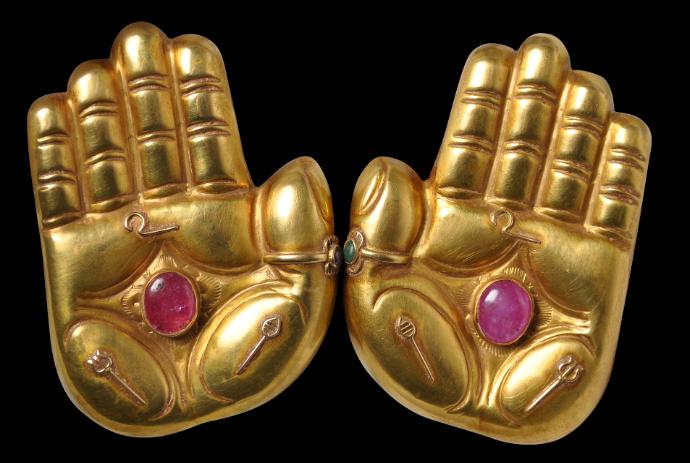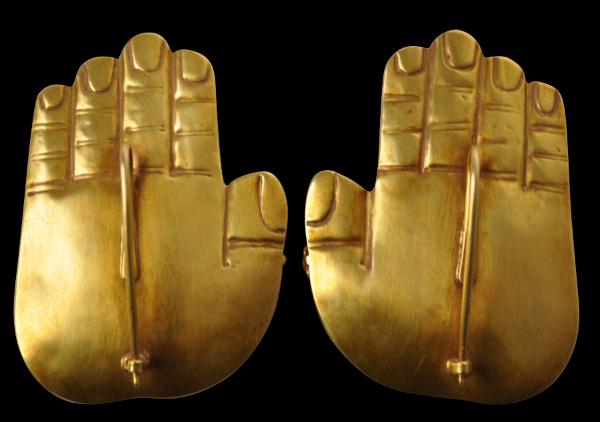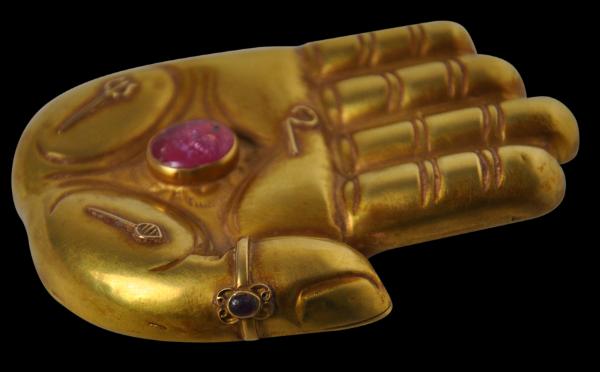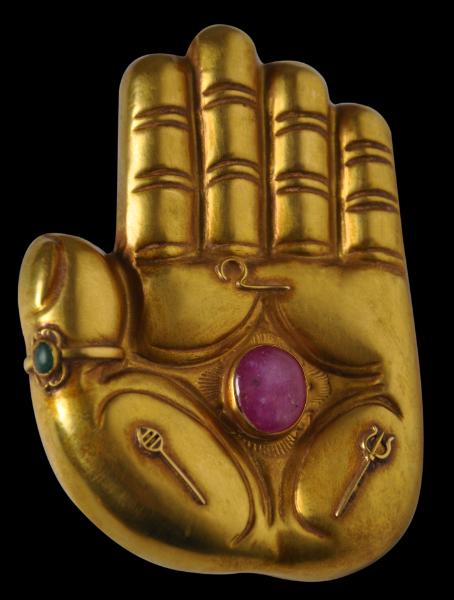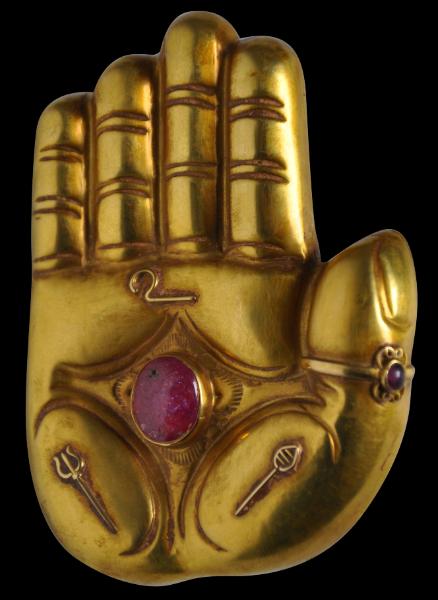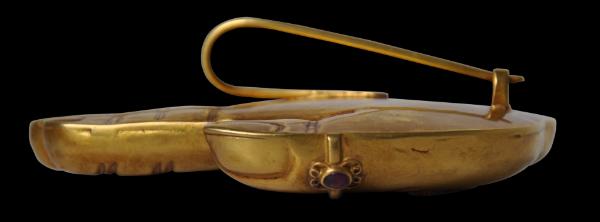
Vishnu Gold Hands, South India
Pair of Vishnu’s Ruby & Emerald Inset Solid Gold Hands to Adorn a Temple Statue
South India
19th century
width (each approx.): 5.5cm, height: 8.5cm, max. thickness: 1cm, combined weight: 99g
This pair of ornamental hands is of solid gold sheet, repoussed, engraved and soldered together to give the hands realistic thickness. Each is inset with a large, central cabochon ruby. The thumbs of both hands have been decorated with rings – one with a single cabochon ruby, and the other with a single cabochon emerald.
The hands have applied symbols fashioned from gold filigree, including a trident motif.
A large gold pin is attached to the reverse of each hand to allow them to be fastened to adorn a statue.
Such hands were used in certain Hindu temples in South India, possibly in or near the Tamil Nadu city of Madurai, as temple jewellery to decorate statues of Vishnu and related images. They would have been commissioned by a devotee and presented to the temple as an act of merit, and are in the gesture of fearlessness. Several sets of bejwelled gold hands that serve a similar purpose are illustrated in Filliozat (1966).
Gold is imbued with a spiritual component in much of India. It is a symbol of the sun and also associated with Lakshmi, the goddess of wealth. Indians, rich or poor, all tried to have at least a small quantity of gold even if just a simple pair of earrings, for gold was coveted. And traditionally, Hindus would place a small piece of gold in the mouth of the departed as a symbol of the immortality of the soul and as payment to Yama, the god of death, for shepherding the soul to the hereafter (Bala Krishnan
et al, 2005, p. 17).
According to Ollemans (2013), the kings of India were believed to be descended from the gods and they paid extravagant tribute to the deities by decorating them with gold and other precious materials. Deities were humanised: they were bathed and fed as if they were living beings, and adorned with all manner of jewellery. The more a deity wore, the more powerful and sacred it became. Once the deities were so embellished and humanised, then the kings ordered extravagant gold jewellery for themselves that mirrored the deities, thereby elevating themselves to the level of the deified. The demand for gold was immense and the goldfields of India were exhausted so that gold needed to be imported from beyond the subcontinent.
The hands are in excellent condition, and yet show obvious signs of age and use.
References
Bala Krishnan, U.R. et al, Icons in Gold: Jewelry of India from the Collection of the Musee Barbier-Mueller, Somogy, 2005.
Filliozat, J,
Parures Divines du Sud de l’Inde, Publications de l’Institut Français d’Indologie, 1966.
Ollemans, S., ‘Of gold, gods and men: jewellery in India’, in
Arts of Asia, November-December 2013.
Provenance
private UK collection
Inventory no.: 2469
SOLD

